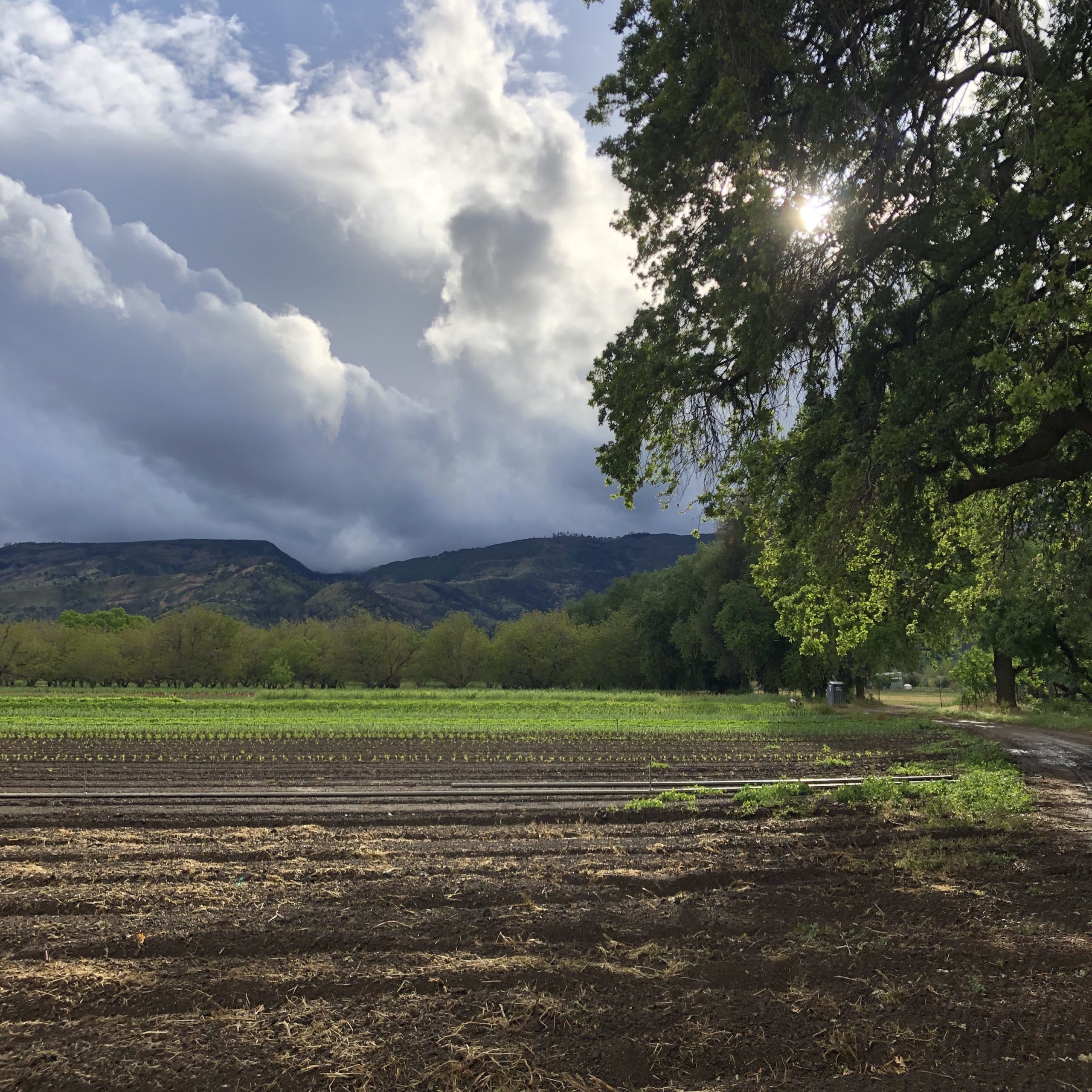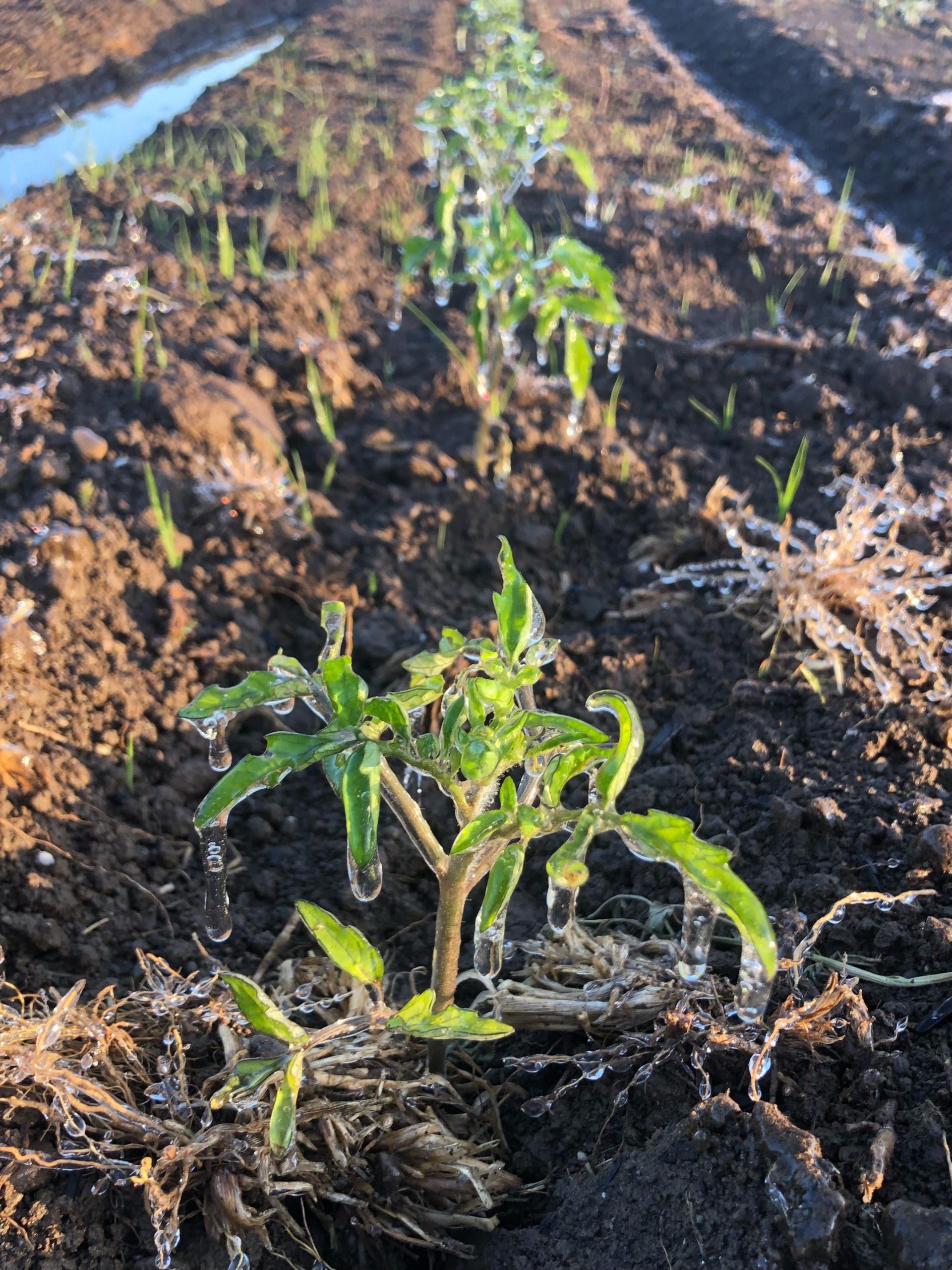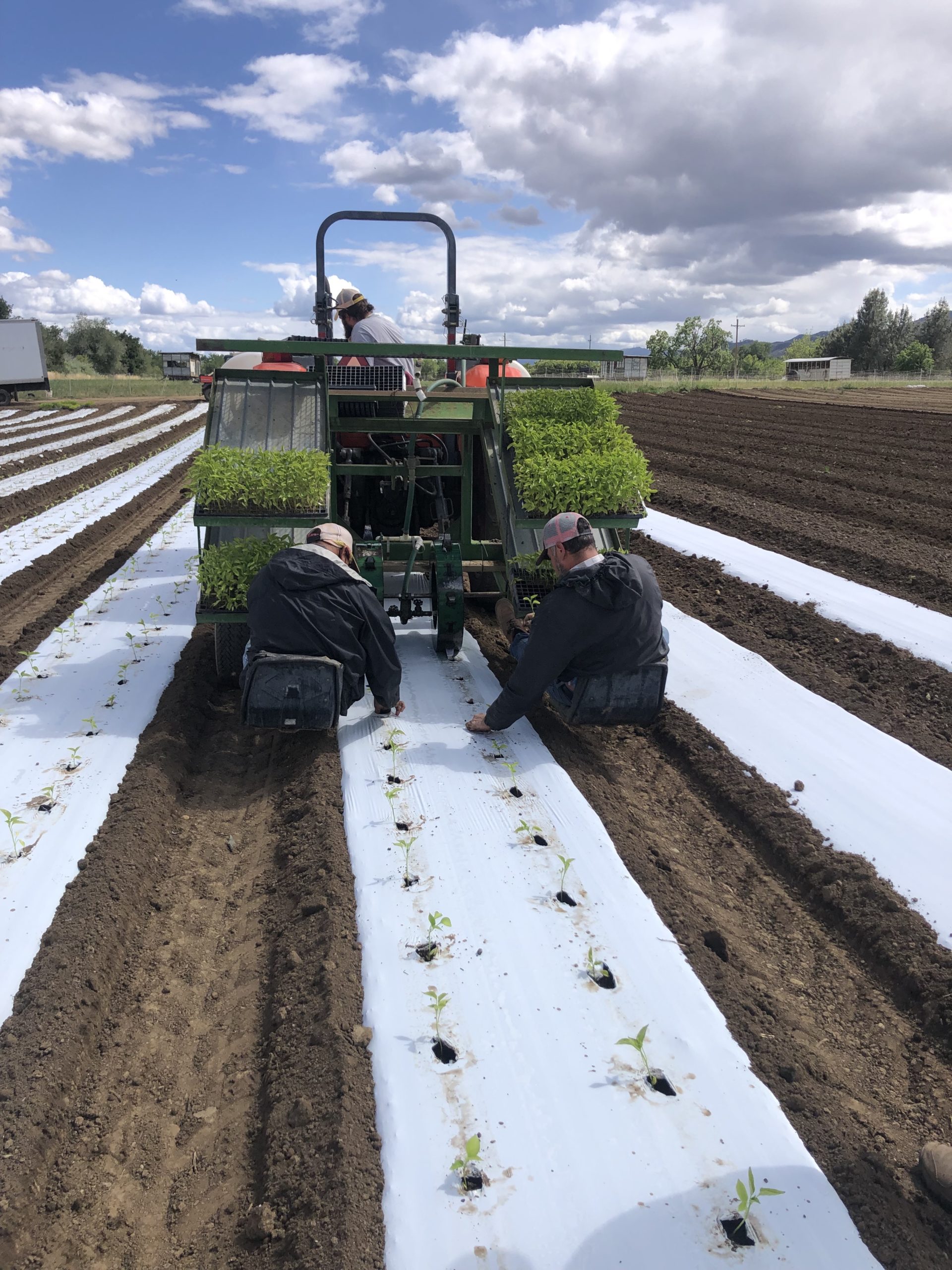
The old saying goes “April showers brings May flowers.” We did get some rain in April: half an inch on Saturday the 16th and then some scattered trace amounts last week, despite some very dramatic skies that suggested the potential for more. Given our Mediterranean climate, we likely won’t get more until fall and we’ll be using our irrigation system to get flowers for May, and through the summer till it rains again. But given how little we got during this year’s rainy season, we’ll take what we can get.
This April, we’ve seen a little bit of almost everything: upper 80s at the beginning of the month, gale-force winds, rain, freezing nights, and seasonally-appropriate days in the 60s and low 70s. Fortunately, we didn’t get any hail, which would’ve punched out holes in our lettuce, leafy greens, and flowers. The little bit of rain has resulted in an explosion of weeds, so there’s a lot of weeding to do.

In the Capay Valley, the hills are starting to turn brown. On the farm, summer crops are making their appearance in the fields. We’ve got melons, peppers, basil, tomatoes, and more, and little summer fruits are on the trees and growing. All of this makes the recent sub-freezing temperatures at night a bit dicey. We’ve gone below freezing three times, but seem to have avoided serious damage. Our response in moments like these is to run the sprinklers for the most vulnerable crops. Why? Water gives off heat as it freezes and that heat is enough to warm and protect the crops. When/if ice forms, the shell of ice around the plants stops the cold damage, but only if the irrigation runs until temperatures warm up. Using water to protect from frost damage works unless the temperature goes below 24 degrees, at which point the water can do more harm than good. Covering up all of our plants with floating row cover isn’t an option, so waking up during the middle of the night to turn on water is the only option. We waited to put in the peppers until Friday once the cold had passed.
For the cool-season crops (like kale), the rapid shifts in temperatures is quite confusing for the plants, causing them to flower prematurely when it’s hot and/or grow slowly when it’s cold. The slowdown was most obvious in something like the asparagus, which doesn’t need to be harvested as often when it’s cold, and it means there’s less around.
This next week is looking warmer, and more stable, with less variation and less extremes. We’ll take it; it makes things easier to predict and lessens the long list of things to worry about. Now back to transplanting peppers and weeding!

– Elaine Swiedler, CSA Manager
